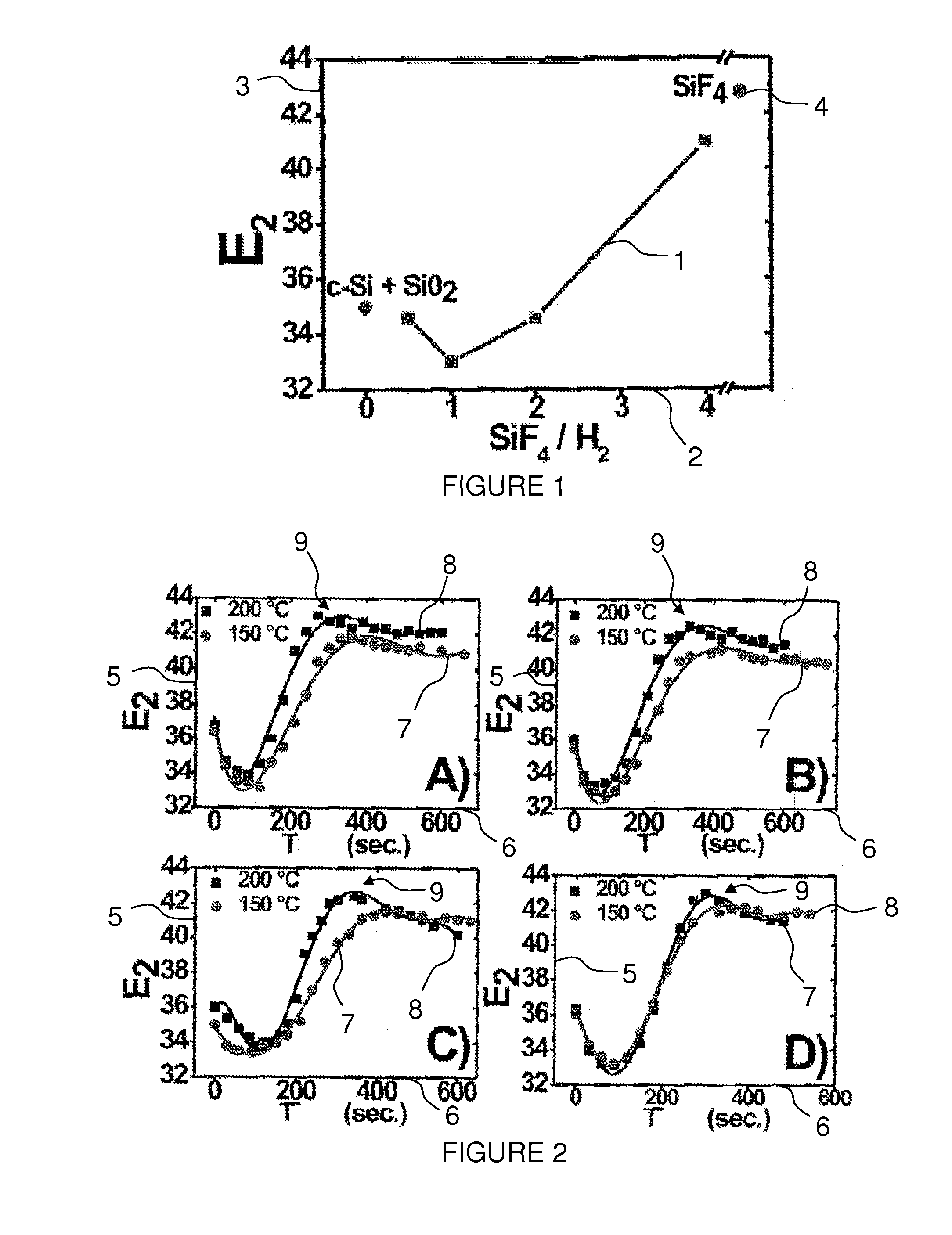Method for cleaning the surface of a silicon substrate
a technology of silicon substrate and cleaning method, which is applied in the direction of cleaning using liquids, sustainable manufacturing/processing, and final product manufacturing, etc., can solve the problems of high fabrication cost and achieve the effect of reducing fabrication cos
- Summary
- Abstract
- Description
- Claims
- Application Information
AI Technical Summary
Benefits of technology
Problems solved by technology
Method used
Image
Examples
Embodiment Construction
[0026]In one implementation of the invention, the method of cleaning the surface of a silicon substrate initially covered with a layer of native silicon oxide includes a step a) of exposing the surface to a radiofrequency plasma generated from a fluorinated gas in a reaction chamber, resulting in stripping the layer of silicon oxide by gas phase etching (dry technique).
[0027]A fluorinated gas is injected into the reaction chamber of a plasma enhanced chemical vapor deposition reactor (PECVD). The plasma excited by a radiofrequency voltage (RF) comprises fluorine-based elements (molecules, atoms, ions).
[0028]This step a) is carried out for a period in the range 60 s to 900 s. The power of the plasma is in the range 1 W to 30 W, corresponding to a power density in the range 10 mW / cm2 to 350 mW / cm2. The pressure of the fluorinated gas is in the range 10 mTorr to 200 mTorr.
[0029]The fluorinated (or fluorine-based) gas is preferably a SiF4 gas. Other fluorinated gases may be used such as...
PUM
| Property | Measurement | Unit |
|---|---|---|
| temperature | aaaaa | aaaaa |
| power | aaaaa | aaaaa |
| pressure | aaaaa | aaaaa |
Abstract
Description
Claims
Application Information
 Login to View More
Login to View More - R&D
- Intellectual Property
- Life Sciences
- Materials
- Tech Scout
- Unparalleled Data Quality
- Higher Quality Content
- 60% Fewer Hallucinations
Browse by: Latest US Patents, China's latest patents, Technical Efficacy Thesaurus, Application Domain, Technology Topic, Popular Technical Reports.
© 2025 PatSnap. All rights reserved.Legal|Privacy policy|Modern Slavery Act Transparency Statement|Sitemap|About US| Contact US: help@patsnap.com


